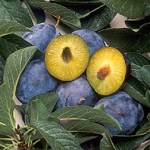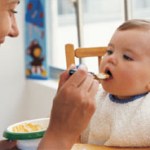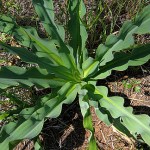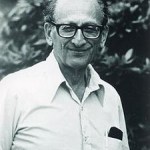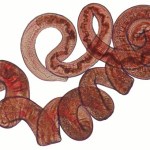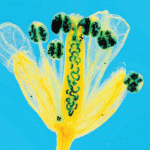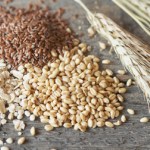
Some thoughtful and interesting letters in response to the OpEd that James McWilliams and I wrote recently for the NY Times. Here are some highlights:
I think that there are many in the organic food movement who recognize that genetic engineering has a role to play in the future of food. But concerns about what it should be, and who should be making that decision, are valid. I am all for nonprofit groups and university researchers working to alleviate starvation in the third world. I trust their motivations and scientific integrity. I have no such faith in agribusiness.
Traditional small…
The World Science Festival, is a five day-long extravaganza of science in New York City that is coming up this year on June 2-6. The World Science Festival (now in it's third year) is not only for adults interested in science society- it is for kids, too. That why I will bring my 9 year old daughter with me. She is clamouring for high heels to wear to the opening night gala honoring Stephen Hawking. On Sunday, the heels will come off for some fun at the Festival Street Fair, featuring Discovery Theater and Author's Alley.
On Friday evening, I will participate in a panel called Food 2.0:…
The number of people on Earth is expected to shoot up from the current 6.7 billion to 9.2 billion by 2050. How will we feed them? If we continue with current farming practices, vast amounts of wilderness will be lost, millions of birds and billions of insects will die, and farm workers will be exposed to more and more chemicals. And still, we will not have enough food. Clearly, there must be a better way.
Some scientists and policymakers suggest that genetic engineering, a modern form of crop modification, will dramatically reduce our dependence on pesticides, enhance the health of our…
This Op-Ed just published today in the NY TImes.
Here it is with links and a few edits.
A REPORT by the National Research Council last month gave ammunition to both sides in the debate over the cultivation of genetically engineered crops. More than 80 percent of the corn, soybeans and cotton grown in the United States is genetically engineered, and the report details the "long and impressive list of benefits" that has come from these crops, including improved soil quality, reduced erosion and reduced insecticide use.
It also confirmed predictions that widespread cultivation of these crops…
Ask a ScienceBlogger is a great way to get the answers you want.
Do you have a burning question to put to the ScienceBlogs bloggers?
Now is your chance to ask. ScienceBlogs has just announced the Ask a ScienceBlogger series, in which (you guessed it), you get to ask ScienceBloggers questions, and they answer them!
Once the ScienceBloggers have a database of questions, they will choose one at a time to pose to us ScienceBloggers, and round up the answers for you on their site.
Go ahead and post your questions as a comment here, or email it to editorial@scienceblogs.com. And look for the…
There is little doubt that organic farmers have been instrumental in bringing the need for ecologically based agriculture to the public's attention. That is a good start. We now need to move beyond organic (still only ca 2% of US agriculture) and embrace other tools and farming practices that can help shift current agricultural systems towards enhanced sustainability.
The need is dire.
1 billion people are malnourished, 300,000 people continue to die each year from pesticide-related poisonings, farming on ecologically sensitive land is expanding, the water needed to sustain farming dwindles…
hat tip for this video to Isis and the Thoughtful animal.
Tonight's dessert is plum cake:
Tante Lissy's Flaumen Kuchen (Plum Cake)
1 c Butter
1 c Sugar
1 Egg
2 tsp Almond extract (or vanilla)
1 tsp Salt
1 c White fl our
1 c Barley
10 Plums, pitted and cut in half
2 Tbsp warmed apricot jam
1. Beat together butter and sugar. Add in egg, almond or vanilla extract,
and salt.
2. Mix in fl our and barley to form a dough.
3. Pat 2/3 of the dough into an ï¸-inch pan with removable rim. Arrange plums,
cut side down, in pan.
4. Lattice rest of dough on top; drizzle with apricot jam.
5. Bake at 350°F for 45 minutes.
I saved some Santa Rosa plums last summer…
Today I wore a bikini for science.
Last week, Hojatoleslam Kazem Sedighi, Tehran's acting Friday prayer leader was quoted as saying :
"Many women who do not dress modestly ... lead young men astray, corrupt their chastity and spread adultery in society, which (consequently) increases earthquakes,"
Today, blogger Jen McCreight, is running a global experiment to test the hypothesis that not dressing modestly causes earthquakes.
"With the power of our scandalous bodies combined, we should surely produce an earthquake," she wrote.
Join in the experiment; bare an ankle or two.
For Earth Day, let's celebrate Stewart Brand, the distinguished writer, lecturer and author of the classic Whole Earth Catalog, which won the national book award in 1972.
He also has a new book called "Whole Earth Discipline" where he argues that the established Green agenda is outdated, too negative, too tradition bound, too specialized, too politically one-sided to address the scale of environmental problems that we face today.
You might want to check out John Tierney's column.
"[Stewart Brand] was the one, after all, who helped inspire Earth Day by putting the first picture of the planet…
For a short 5 minute tour of Bill Gates tackling the controversy of GE crops, please see the blog ERV. Thanks for the plug ERV
If you have 45 minutes, watch the entire video here. Bill is serious, sincere and a good speaker with important concepts to convey:
The video starts about 11 minutes in.
> WASHINGTON- (AP) The leader of the United States Department of
> Agriculture's National Institute for Food Research, Dr. Roger Beachy,
> admitted that the release of last week's request for proposals (RFP)
> from scientific researchers was "simply a gag to lighten the research
> funding environment" and that the real one will be released this week.
>
> "Researchers are too stressed out; it seems that all they do is write
> grants. The request for proposals to address extremely finite subject
> areas would alienate 95% of them and give them all an opportunity…
A few years ago, next to a small barn converted into a winery, I noticed a flyer asking voters to support Measure M, an initiative in Sonoma county that sought to " prohibit the raising, growing, propagation, cultivation, sale, or distribution of most genetically engineered organisms."
It pictured the destruction in New Orleans wrought by Hurricane Katrina and the bewildered gaze of George W. Bush. The flyer proclaimed "Who do you trust with your family's health and safety? When FEMA failed, more than a million Americans suffered."
That flyer was typical of the misinformation about GE crops,…
I try not to travel in the spring. Instead of the stale air of the airplane, I try to get out to the mountains, the beach, the garden or to the nearby foothills.
Last weekend my daughter and I (who is 8 years old today), went for a walk. I thought she was strong enough to do the 5 mile hike in the Stebbins Cold Canyon Preserve so off we happily went. As we started up the VERY steep hill, her trust began to dissipate. Then the inevitable "I want to go home".
I definitely did not want to go home. More than that, I did not want her to want to go home.
"Look, a soap plant, the people that were…
Tomorrow's Table's Swiss-Gruyere pie made it to the pi day Pie Bake off finals.
If you have time to peruse the entries, please do. Vote here.
For the 2010 Pi day bakeoff, I baked a Swiss chard-Gruyere pie.
Shown here is the backdrop to our garden:a mural on the side of our barn, painted with California poppies, rice plants, sunflowers and (look closely) a red double helix. Artist: Jim McCall, Elastic Media.
Here is the recipe:
First, gather as many ingredients as you can from your garden. In our garden, I found multi-colored swiss chard, Kale, chives, thyme and parsley.
Next, prepare the crust:
1 cup barley flour2 cups white flour
1 tsp salt
1 cup unsalted butter
1/2 cup unsalted margarine, frozen
grated rind of 1…
Check out this great post by Mary M on biofortifed. In it she reviews a new research paper that describes how the use of Bt could potentially save the lives of millions.
You can download a video about the researchers and their work here.
From Mary's post: "For some people, a great deal of the conflama around genetically-engineered (GE) crops has to do with the presence of a pesticide in the plant material--mainly the Bacillus thuringiensis or Bt protein--rather than coating the surface of the plant as organic Bt sprays or chemical-style pesticides would. No matter how many times I explain…
Science Magazine this week published the winners of this year's International Science and Engineering Visualization Challenge.
Self-Fertilization: Heiti Paves and Birger Ilau, Tallinn University of Technology
Within its tiny white flowers, thale cress (Arabidopsis thaliana) does what most plants avoid: It fertilizes itself. Heiti Paves of Tallinn University of Technology in Estonia took this photograph of the flower with its pollen grains and ovaries stained blue to show the process in action. From the six pollen heads, the grains grow thin tubes toward the bean-shaped ovaries in the flower…
Thank you Bill Gates for your work on behalf of farmers and.... for blogging on our book, Tomorrow's Table!
If you don't have time to read the full reviews, here are a few excerpts:
"This is an important book for anyone who wants to learn about the science of seeds and the challenges faced by farmers... I think anyone who reads this book will be convinced of the authors' sincerity and intelligence - even if, like me, you never try any of the cool-sounding recipes...
I gained an understanding of the history of organic farming and learned about some of the very clever ways organic farmers…
John Broder writes today in the New York Times that the uproar over the unauthorized release of hundreds of emails and recent revelations about a mistake in the IPCC report threatens to undermine decades of work and has badly damaged public trust in the scientific enterprise.
Broder's interviews with scientists reveal two thoughtful but seemingly opposing viewpoints:
'Ralph J. Cicerone, president of the National Academy of Sciences, the most prestigious scientific body in the United States, said that there was a danger that the distrust of climate science could mushroom into doubts about…
